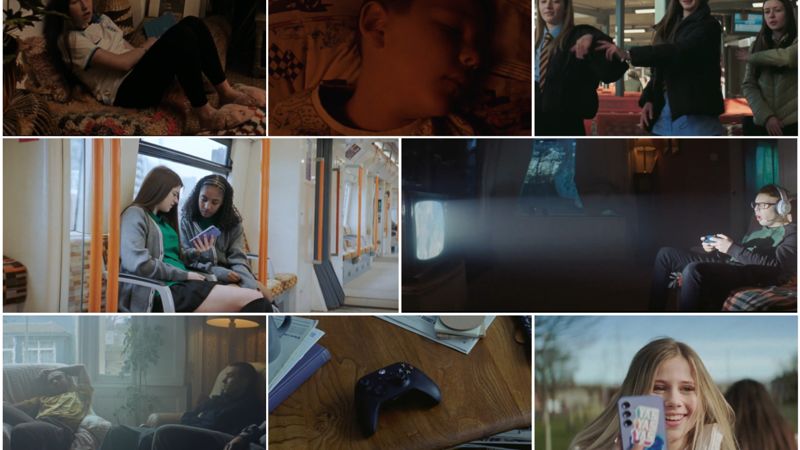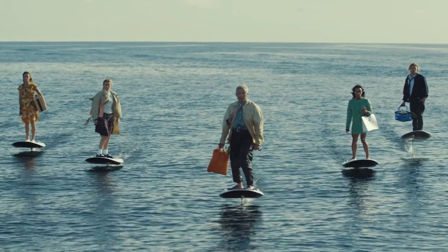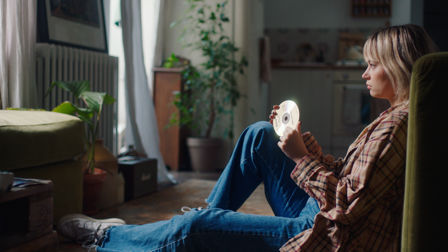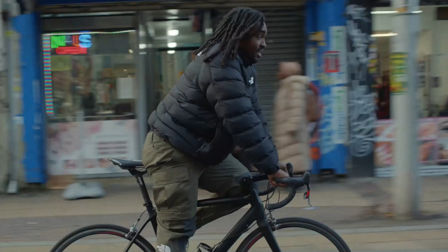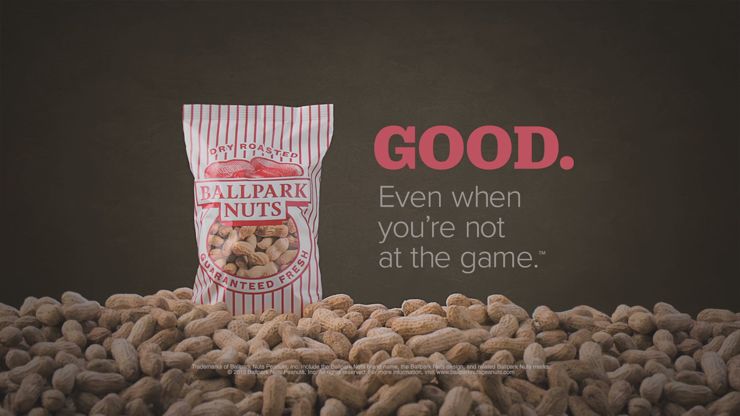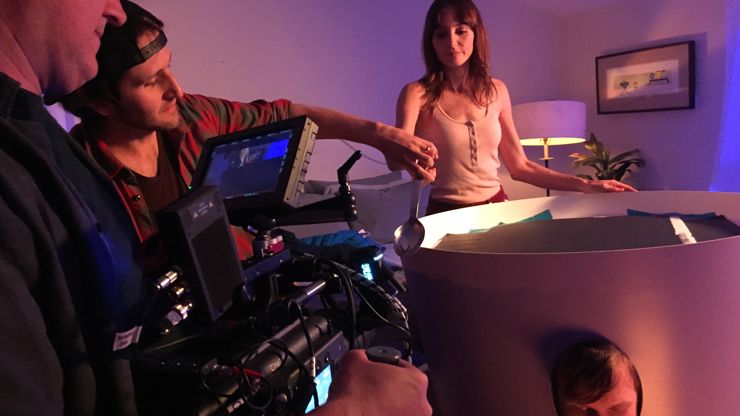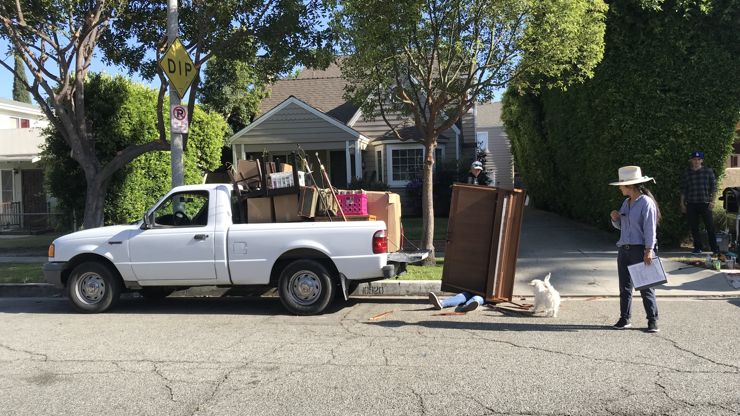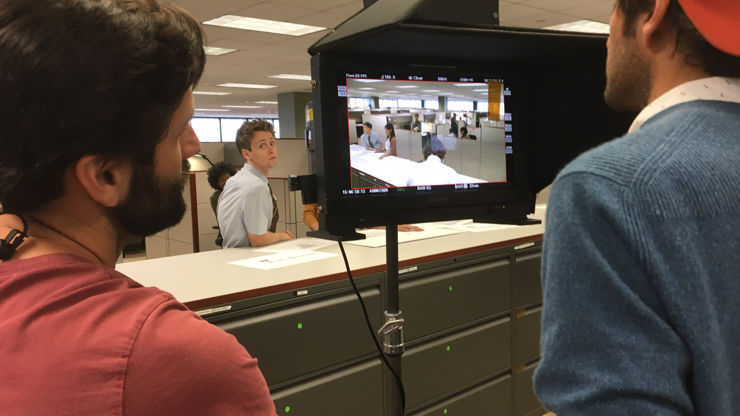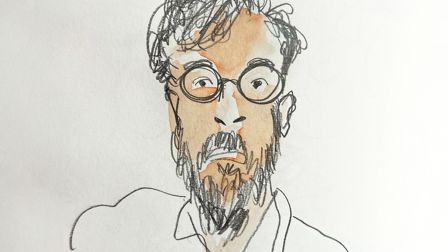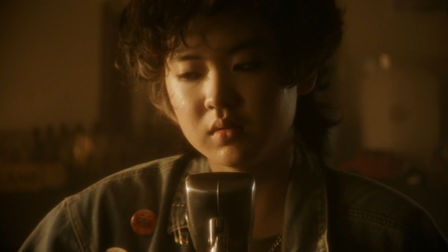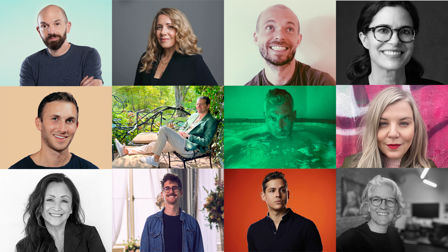Short film tells a comedic love story entirely through fake ads
Director Ben Callner brilliantly reimagines the classic boy-meets-girl story as a series of spots for ice-cream, pet food, mobile networks and more.
This ingenious short film, which constructs its narrative entirely from commercials for imaginary products, will make you look at advertising in a completely different light.
An unconventional boy-meets-girl romance that simultaneously muses on consumerism and commercial storytelling, Adman is the brainchild of director/producer duo Ben and Adam Callner. Having created work for the likes of GEICO, Volkswagen and Verizon, the brothers have woven their extensive experience in the commercials world into a wonderfully creative short that'll make you laugh, cry and seriously question the roles that brands and products play in our lives.
With each scene from the film crafted as a standalone TV spot for a non-existent product, the film's romantic narrative does double-duty as opportunities to hawk products as diverse as cookies, chewing gum, mobile networks and dog food. Plus, it boasts - arguably - one of the best sex scenes we've ever seen in an advert, involving a man dressed up as a tub of ice-cream and a giant spoon.
Watch the film below, then read on for a Q&A with director Ben Callner.
Credits
powered by
-
-
- Director Ben Callner
-
-
Unlock full credits and more with a Source + shots membership.
Credits
powered by
- Director Ben Callner
- Producer Adam Callner
- DP Doug Chamberlain / (DP)
- Editor Ben Callner
- Editor Joe Kell
- Editor Alex Pirrone
- Editor Ben Suenaga
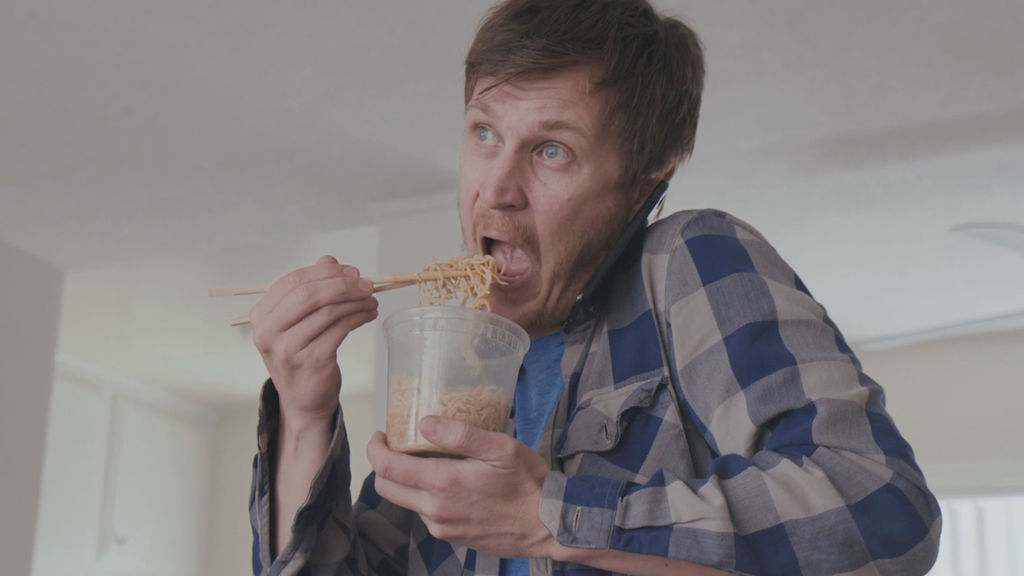
Credits
powered by
- Director Ben Callner
- Producer Adam Callner
- DP Doug Chamberlain / (DP)
- Editor Ben Callner
- Editor Joe Kell
- Editor Alex Pirrone
- Editor Ben Suenaga
How and when did you first come up with the idea of building a short film out of commercials?
Years ago I saw two Super Bowl commercials air back to back; the first spot was a legitimate PSA about a recent natural disaster that tore at the heartstrings. The second spot initially appeared to be yet another heartfelt PSA about deforestation in the Amazon, only to then talk about getting good deals on bikini waxes and “Brazilians.” It was supposed to be a funny misdirect but came across in bad taste.
This unfortunate pairing of Super Bowl spots got me thinking; mainly, would that second spot have fared better if it were not immediately preceded by its own more serious, sympathetic mirrored-image? From there, I couldn’t help thinking about context and meaning and the impact of commercials and who creates value and why do I think of my wife every time I see Kombucha and does a love for pizza define someone? Basically, are commercials more important and impactful than we even know? And on the flip side, is that a bad thing?
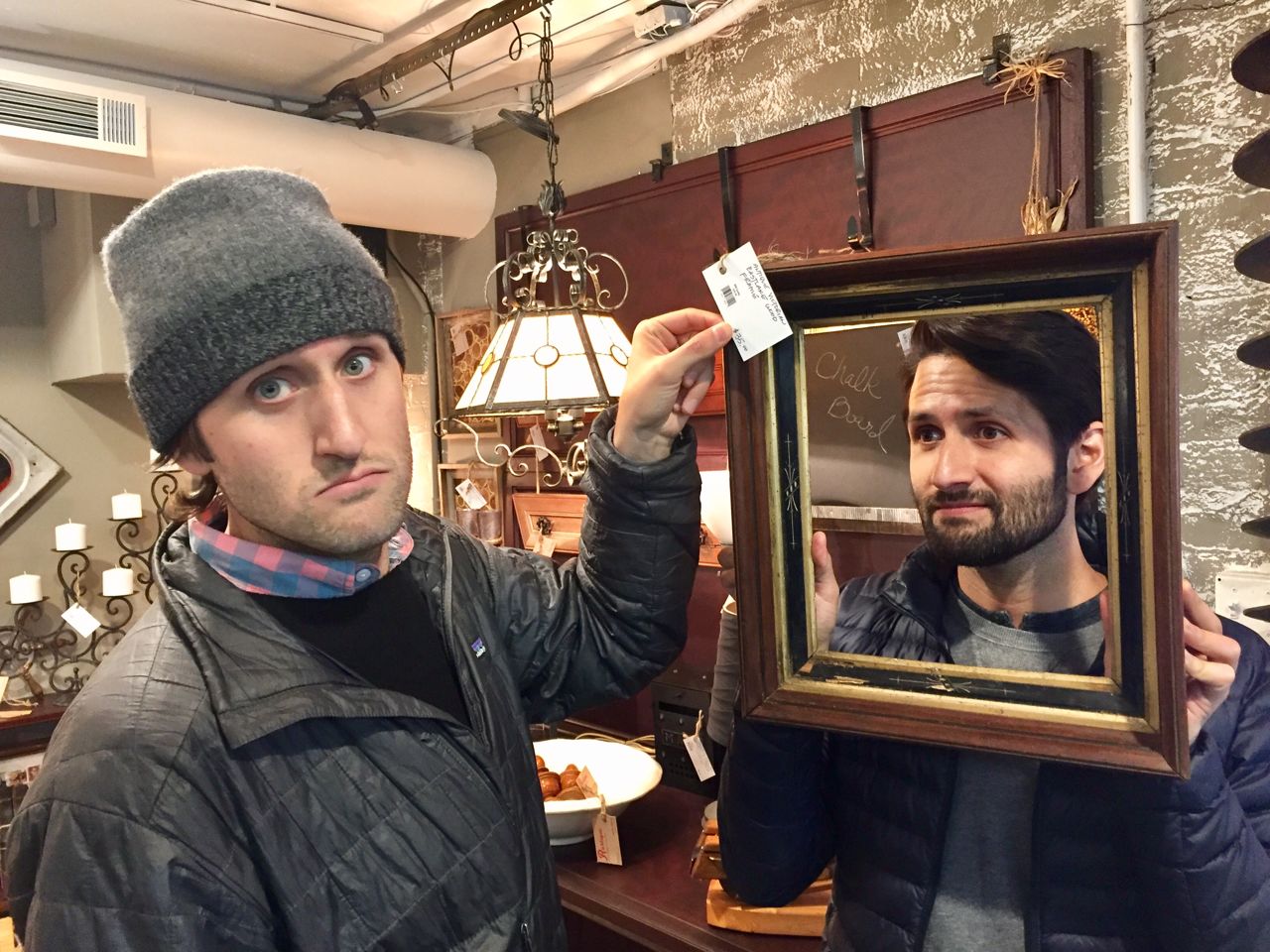
Above: Director Ben Callner (left) with his brother and producer, Adam
As a commercials director how many of the ads in the film came out of your 'bottom drawer'?
Ha! I’m not familiar with that term, but if by “bottom drawer” you mean boards/projects that I received from agencies but that dissolved away for one reason or another… none. But if you mean old spec spot ideas that I’ve had, only one - the LoveClicks ad. Everything else came to be out of necessity for the overarching story.
Adman wasn’t so much a story as it was a philosophy or an experiment.
All the brands featured are fictional, but did you ever toy with the idea of using real brands?
We definitely toyed with them being real, and at one point really wanted them to be real. But we also wanted this short film to question the difference between a commercial and a film, and to sort of bridge that gap. One way it could do that is by getting into film festivals or getting a lot of attention on the internet – and if any of those things happened, we would have hated to suddenly have lawyers telling us we need to pull something entirely or rebrand.
The other reason was that so many brands already have inherent value built into their advertising. As we all know, commercials cost a lot of money… and of course, our budget was limited. So by using real brands, we feared that we would showcase all of the things we didn’t have versus the things we did have; in other words, real brands might make the viewer focus on the ‘spec’ side of things rather than the story.
We also didn’t want this to feel like a hodgepodge of commercials, directed by different directors. Adman plays with tone and different types of commercials but it was always, “How would we do this?”
Above: some of the fake brands featured in Adman.
To me, characters and moments - often funny moments - is what drives things, in both films and adverts. Any and all plot and narrative structure is secondary to us caring or relating to a character based on little things that make us laugh. Laughter and humour, man, they’re the best ice breakers. We share something when we laugh with someone. So most of the time, for me, a plot is based solely on context and seeing the characters we either love or hate in a situation.
For me, there’s a reason why watching a certain scene in a movie out of context can mean (or make us feel) absolutely nothing, like coming into a movie late and missing a scene with a little moment that makes us connect to the character. Who knows, had you not seen Allie with chocolate cookie all over her face, maybe you wouldn’t relate to her as much.
So the experiment, or goal, was to play with context and meaning in storytelling, because those two things are also super-important in advertising.
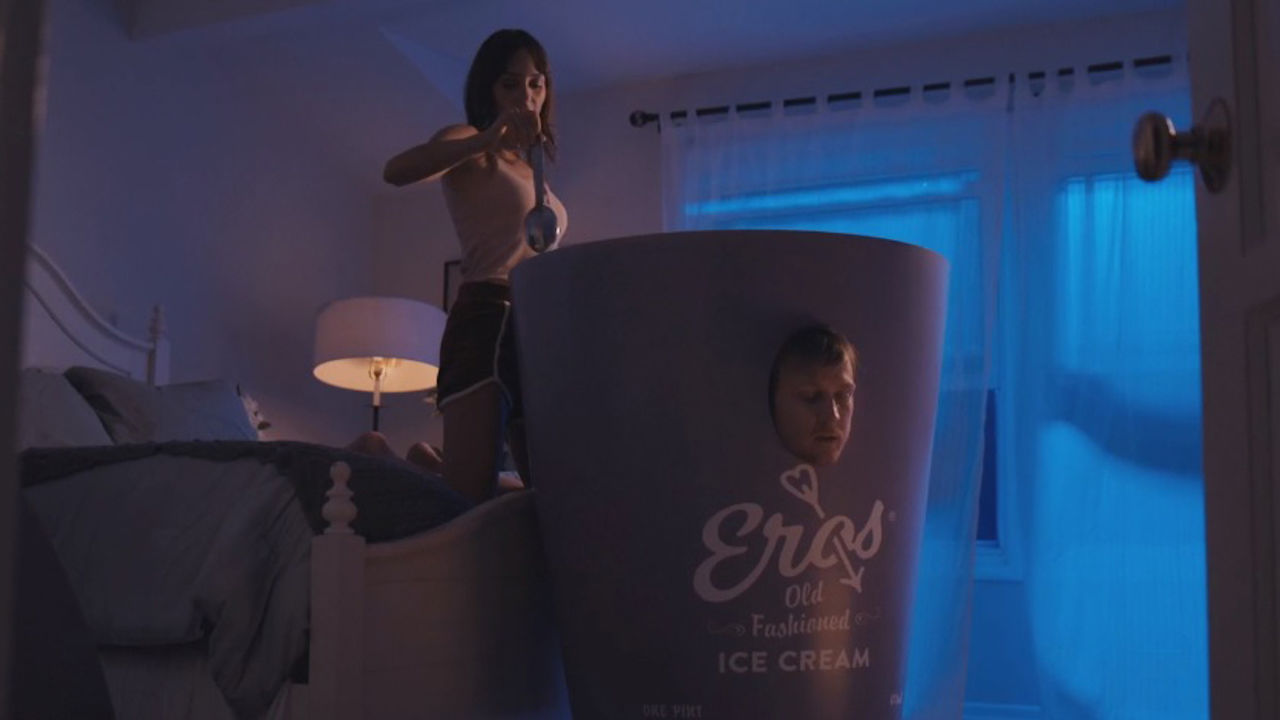
How long did the production process take from start to finish? And what sort of a budget were you working with?
My brother, Adam, is my producer. So I’m fortunate to have someone amazing that I can not only bounce ideas off of from the very beginning but who can also get the ball rolling quickly and efficiently when it comes to production. He can steer things in the right direction from the get go.
In addition, we’re fortunate to have worked with a bunch of incredible crew on properly paying jobs. And, as it turns out, they like working with us as well. And I really leaned on my DP Doug Chamberlain, who was (and always is) much more than a DP. Doug got involved early as well and helped shape the story into what it is.
So being able to start early on and tap as many of our favourite people as possible, after getting the script in a good place (which took quite some time, I think I wrote 80 or so spec spots), the process took us about six months from getting the logos / brands designed to casting to locations to shoot. It was a six-day shoot.
We sometimes have a hard time letting go of certain objects because buried in those objects are memories. What most people don’t think about is that at some point, those objects were, most likely, advertised and sold to them.
And of course Adam’s and my parents are incredible. They actually were our craft service. Having them on set was maybe the most magical part of it all. Still, this couldn’t just be favours – there was way too much being asked, and on paper, this idea is insane - and hard to imagine. Because short films rarely, if ever, make their money back directly, very few people would invest. So as far as budget goes, I basically emptied my bank account.
When it came to finishing, I had put together a pretty good rough cut and shown it to our friends at Friendshop in hopes of editorial advice, but instead, thankfully, they told us that they were there to help finish this in any way possible. MPC got involved with the colouring, and then my buddies at Tunewelders in Atlanta did an amazing job with sound design.
Once again, we’re incredibly lucky to have such talented people believe in us to the point where they’ll say yes to an idea that they may not even believe in or understand fully themselves.
Above: behind the scenes on Adman.
You got some superlative performances out of the cast, but the dog eclipsed them all. How did you approach casting?
It was a long process, one in which I eventually looked at over 4,000 headshots/resumes online (something I’ll never do again) but long story short, once again, we’re so lucky to have worked with incredible people over the years, including our amazing casting directors. Considering that most of this cast had to have an insane range, being able to pull off comedy and drama, and because “short film” (as we learned) is kind of a bad word, it was incredibly difficult… but our casting directors were/are amazing and brought in their selects and it wall worked out.
Talking with the cast, however, was different. Many were confused. Is this a commercial? What is this? I approached it like a film, in that these are merely scenes in a film - the only difference is we’re selling something at the end. But your characters are your characters. They don’t change from spot to spot. Deep down, they are who they are.
And yes, that dog. Incredible. Because our shooting days were jam packed, we made an effort to keep the dog’s material as minimal as possible… the only real necessity being eye line. So when casting Peanut (which is the dog’s name), we just saw a picture (and one reference video) and fell in love with his look more so than anything.

There's a big tonal lurch from humour to pathos, was that always intended? And was there the temptation to end on a comic note?
Sentimentality and nostalgia are terms that people wholly accept. We sometimes have a hard time letting go of certain objects because buried in those objects are memories. What most people don’t think about is that at some point, those objects were, most likely, advertised and sold to them. In this sense, advertising may be more impactful and meaningful than we realise.
Logan didn’t want to get rid of a box full of Koala costumes and homemade paper airplanes, because it was an extension of Allie. But to anyone else, that’s just garbage. He also thought of Allie when he saw the half-eaten cookies. To anyone else, those are just cookies. We inject our memories of people into products.
The most challenging part was writing something where each scene could stand alone but, when viewed as a whole, make an overarching story.
The goal wasn’t necessarily to go from humor to pathos as it was to show how important - in an entertaining way - advertising may in fact be. And having someone die, I thought, was the clearest way to show how things left behind can (and are) connected to those people - sometimes painfully, sometimes cathartically.
That said, I also believe that underlying every bit of substantial humour is heart. You can laugh at a joke but if there’s no substance to it, it’s forgotten quickly. I think a lot of humour these days is too superficial or even cold, with no substance. That’s not to say it’s all fart jokes, because I think fart jokes can still have heart. But for me, the type of humour I personally love and hold onto is the kind that's steeped in pathos. A fart joke steeped in pathos will stay with me.
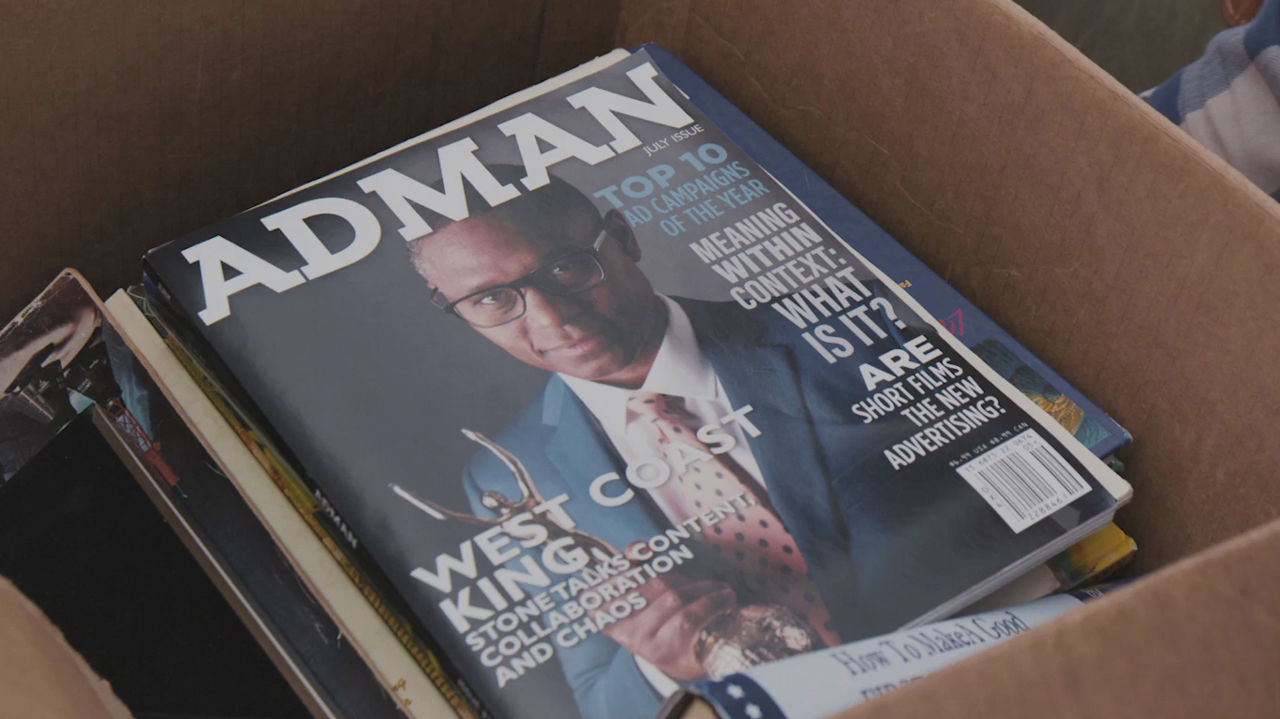
What was the most challenging part of the process? And the most rewarding?
The most challenging part was writing something where each scene could stand alone but, when viewed as a whole, make an overarching story. It was so limiting, especially given that we didn’t want to make the spots overtly satirical or parodic. The idea was to create something where the viewer can find their own meaning, not to answer any questions for them.
The most rewarding was seeing how many people jumped at the opportunity to do something different and help in any way they could. Being on set, knowing how much we had to shoot each day, how hard everyone was working, but still having that loving energy - a lot of which I give credit to our parents being there. It was impossible for any crew to be angry or frustrated when they were serving homemade trail mix.
)
